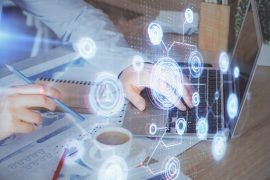medon – Unusual celestial phenomenon can be seen even with the naked eye: brightness increased in winter 2019/2020 beteiguze Up to two thirds for several weeks in the constellation Orion. Many astronomers see this as a sign of the star’s impending explosion in the form of a supernova.
But now there is a much simpler explanation for Betelgeuse’s “great darkness”: starting from a large, cold spot, a curtain of dust had formed in front of the star, as an international research team Following an evaluation of data from the European Southern Observatory’s Very Large Telescope, reported in the journal Nature.
“Our observations suggest that there is no sign of an imminent explosion of Betelgeuse in the form of a great blackout supernova,” write astronomer Miguel Monterges of the Paris Observatory and his colleagues. Betelgeuse is the upper left star of the constellation Orion, also known as the Shoulder Star. The name comes from Arabic and means “hand of twins”.
Betelgeuse is a red giant – a massive star that has bloated significantly at the end of its life. It is about 900 times larger than our Sun. Its diameter is about one billion kilometers. He will eventually spend his life as supernova break up Typical for this is a brief, bright flash during which the massive star explodes. Its brightness increases from millions to billions of times. The core collapses. What is left is a neutron star or a black hole.
Supernova not completely ruled out yet
Observing a supernova in our Milky Way would be a sensation for astronomers – the last opportunity to do so was in 1604, before the invention of the telescope. Therefore, the researchers were electrified by the surprising reduction in Betelgeuse’s brightness, as theoretical models predict such an event immediately before the explosion. At a distance of only 724 light years, Betelgeuse is one of the few stars where astronomers with large telescopes can even see details on the surface.
Observations by Montarges and his colleagues reveal how a cold – and therefore deep – scorch spread across the southern side of Betelgeuse in late 2019. The surface temperature of the star, which is usually around 4000 °C, drops to 500 °C. “For the first time we see how a star’s appearance changes over a period of one week,” Monterges says.
The research team suspects that the cold, dark spot was simply a side effect of a large ejection of matter from the star. And by cooling the surface, some of the emitted material can condense into dust. So it is the combination of a large, cold spot on the star’s surface and a resulting haze of dust that was responsible for Betelgeuse’s great darkness, according to Monterges and colleagues. Betelgeuse again shone in normal brightness in April 2020.
However, researchers cannot completely rule out the imminent explosion of the star. Little is known about this final stage of stellar evolution, they write. “So even if Betelgeuse’s current behavior is not a harbinger of its destruction, it is possible that the star explodes without warning.”

Internet fan. Alcohol expert. Beer ninja. Organizer. Certified tv specialist. Explorer. Social media nerd.





